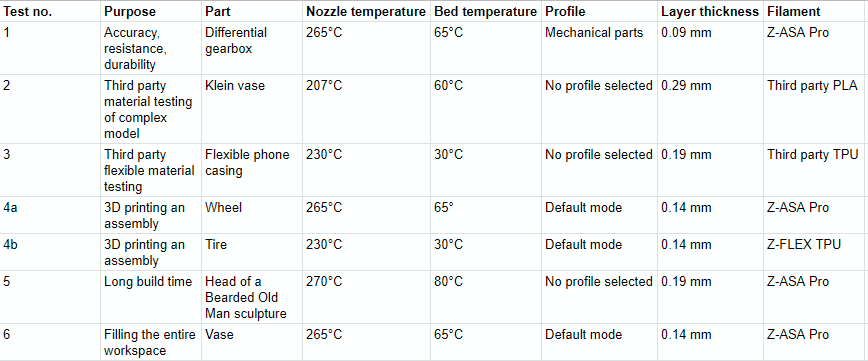The Zortrax M300 Plus is one of the latest material extrusion 3D printers from the M Series of Polish OEM Zortrax. With a build volume of 300 x 300 x 300 mm, it outstrips much of the competition when it comes to the scale and volume of parts achievable on the desktop. Tipped for “Plug and Play” functionality, the M300 Plus promises ease of use in terms of both hardware, and its custom Z-SUITE slicer. It is also built to use a variety of own-brand and third party materials, keeping applications versatile and practical.
In this in-depth review, 3D Printing Industry tests the capabilities of the Zortrax M300 Plus as listed above. Through a rigorous process, our engineers compiled a report outlining the machine’s capabilities with tests designed to verify print accuracy, the ability to work with third party materials, make use of the full volume of the print bed, produce functional part assemblies, and undertake print runs longer than 24 hours. They applied these qualities to a range of real-world uses, as well as assessing the construction, design and utility of the hardware.
This article summarizes the findings and the team’s overall view of how the M300 Plus fulfills its core claims of large volume desktop 3D printing, user friendliness, and response to industrial quality requirements.
General observations of the Zortrax M300 Plus
The Zortrax M300 Plus has a full metal chassis containing a rigid cartesian system. The print bed is heated and perforated, enabling the use of higher quality, often more challenging materials (such as PETG, ASA, HIPS and TPU) and a stronger grip when 3D printing that crucial first layer. Metallic calibration squares on the bed also facilitate leveling. The sensor used for semi-automatic bed leveling is inductive, working only on metallic surfaces. This means that it is not affected by any debris or moisture that may be on the print bed.
Included with our test unit, and available as an add-on to the M300 Plus, is a HEPA cover. The enclosure is a welcome addition for avoiding common warping and curling issues, and for air filtration. It is also a vital upgrade when 3D printing large objects, to ensure a consistent chamber temperature.
As with the structure of the machine, the components inside the M300 Plus are a high quality. The bed leveling sensor, for example, is more expensive than sensors that you would typically get in other self-assembly desktop systems. As a more expensive, higher quality component, its functionality shows in the 3D printer’s ability to handle semi-automatic leveling. The threaded rods, and components holding them, are another example of the M300 Plus’ solid construction. The way these rods are installed in the system limit the mechanical play of the print head as it moves and changes directions. It inhibits vibrations too, substantiated by the resultant quality of 3D printed objects. Advanced features such as spool-end sensing, and semi-automatic bed leveling.
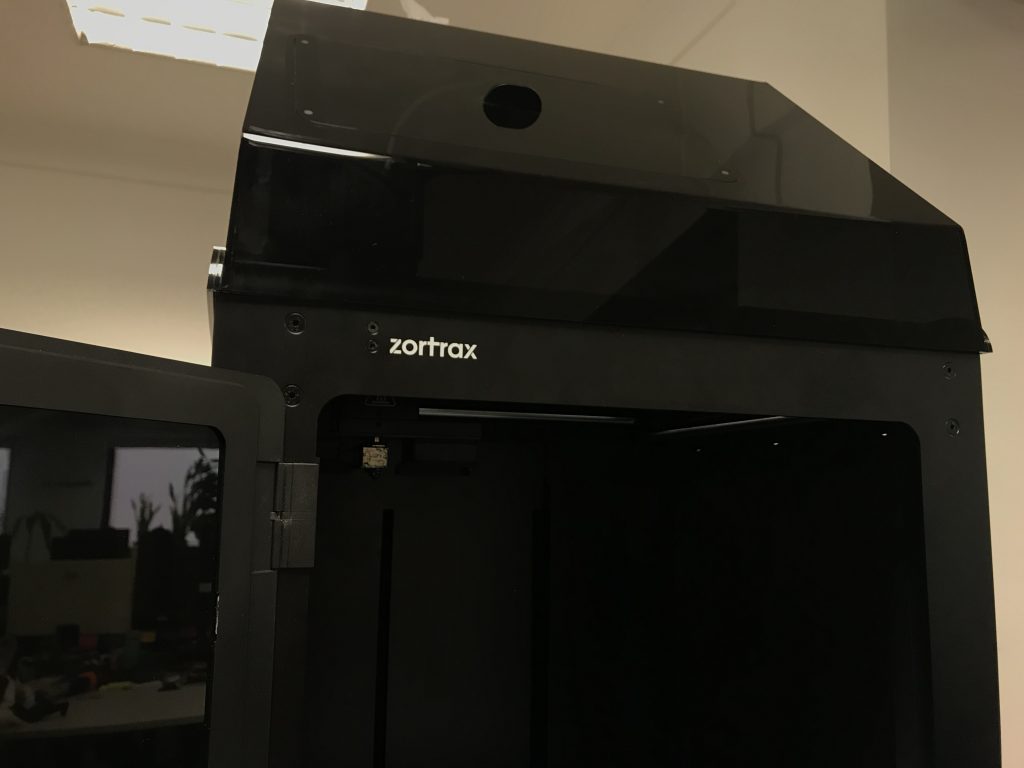
Setting up the Zortrax M300 Plus
Initial setup of the Zortrax M300 Plus took less than 10 minutes to complete. Filament loading or unloading is performed simply by selecting one or the other on the 3D printers inbuilt touch screen. The whole process takes around 2 mins.
Bed leveling on the system is semi-automatic, and in our tests it only took just over 5 minutes to complete. Again operated by the machine’s touchscreen, the M300 Plus analyzes the level of the bed and advises on the degree to which each leveling screw should be tightened. It’s a very convenient method of leveling, but it could be improved even further through the use of clear markings on the screws.
In the final step of set up, we found wi-fi connection to be straightforward, taking no more than 2 minutes, and enabling computer access to the M300 Plus’ inboard camera – a useful feature for monitoring when using the system as part of farm, or for critical jobs.
Activating 3D printing on the M300 Plus was an very intuitive process. Following the preparation of Z-CODE in the machine’s custom Z-SUITE slicer, 3D prints were easily activated over wi-fi or using a USB flash drive.
Proving industrial level quality 3D printing, and third party compatibility
The 3D Printing Industry engineering team spent a month testing the Zortrax M300 Plus at our HQ. To determine 3D printing capabilities an extensive number of tests were performed, and repeated to validate results. A selection of these results are presented below.
Our testing methodology and procedures include checking for repeatability, retraction, circular trajectory, precision, and the ability to produce high details, overhangs, tall parts and wide objects, covering the boundaries of the print bed.
Once the fundamental testing in complete, testing using a series of models to represent the various uses of the 3D printer commences.
Some of the parts produced in this step are listed in the chart below.
In the first test, a differential gearbox, with moving parts, was selected to see if the M300 Plus handles mechanical components. This part turned out particularly well. The mechanism works, with only minor cosmetic defects that don’t hinder movement in any way. It was made in own brand Z-ASA Pro material and provides an accurate examples of mechanical workings, which could be using in functional prototyping.
In test two, the team tried a support-free print, and tested the M300 Plus’ ability to work with third party filaments. A test of retraction as much as design fidelity, this object experienced no stringing when printed, and showed good surface quality in relation to the relatively high layer thickness (0.29 mm). The raft proved difficult to remove, however a subsequent update to Z-SUITE means that rafts are now deselectable.
It is also possible to customize the raft and first layer of a print with the new update. Flow ratio, print speed and density for 3D printing the raft and first layer can be separately set between 50% and 150%. The gap between the raft and build platform, first layer and raft or first layer and build platform (when raft free) can also be determined. And users can select how many layers, upwards of 3, should be included in the raft.
In a more demanding third party filament test, Polymaker TPU was used to assess how the M300 Plus’ handles flexible materials – often more harder task for some desktop 3D printers. The result of this test when producing a phone case was satisfactory and the printer experienced no problems throughout. When repeated using proprietary Z-FLEX TPU, an even better surface quality was achieved. Overall, the test proved that it is possible to print a flat surface with flexible filament, however, the settings have to be chosen carefully.
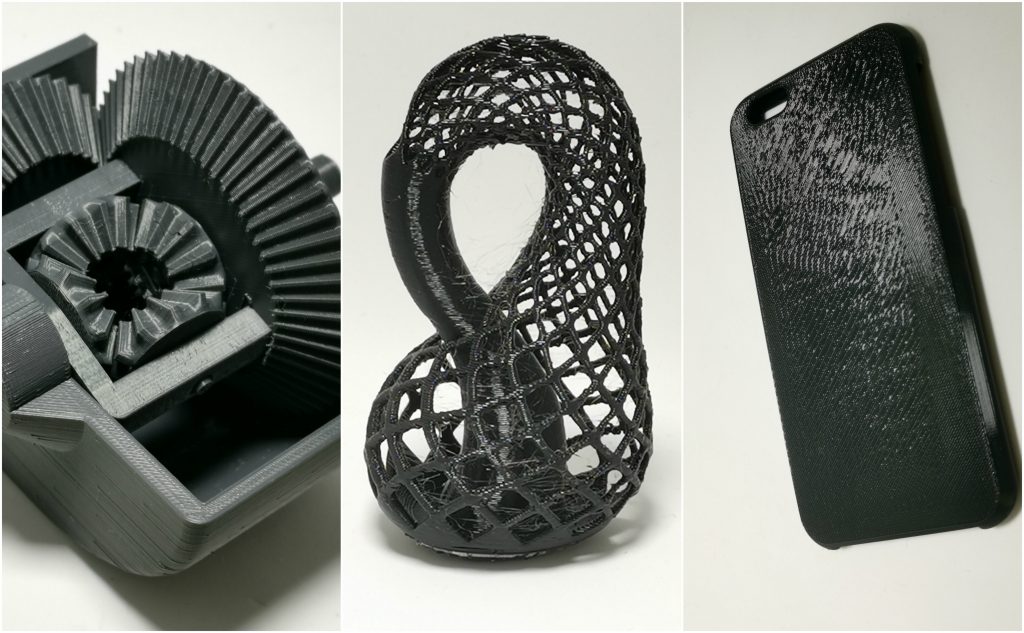
A two-part test, to understand how the 3D printer deals with multipart assemblies, in 4a and 4b the team produced a wheel and tire model. The central wheel was 3D printed using Z-SEMIFLEX and the wheel from Z-ASA Pro. Though 3D printed separately, both objects showed tight tolerances and could be assembled without a problem. The quality of both parts was very good.
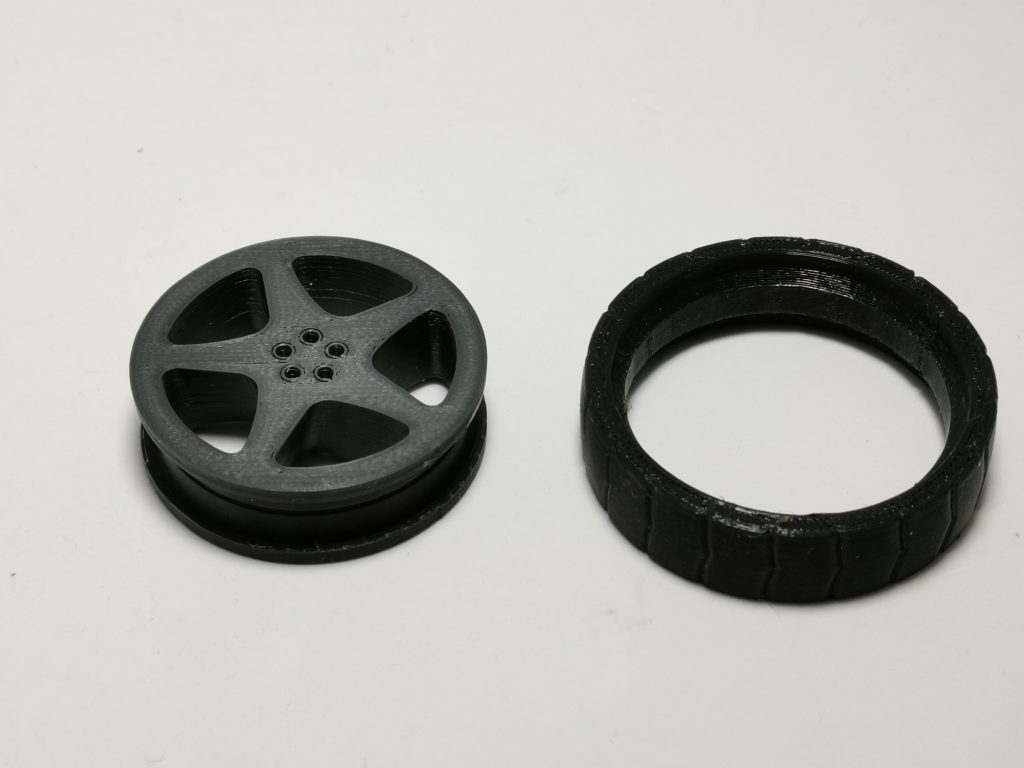
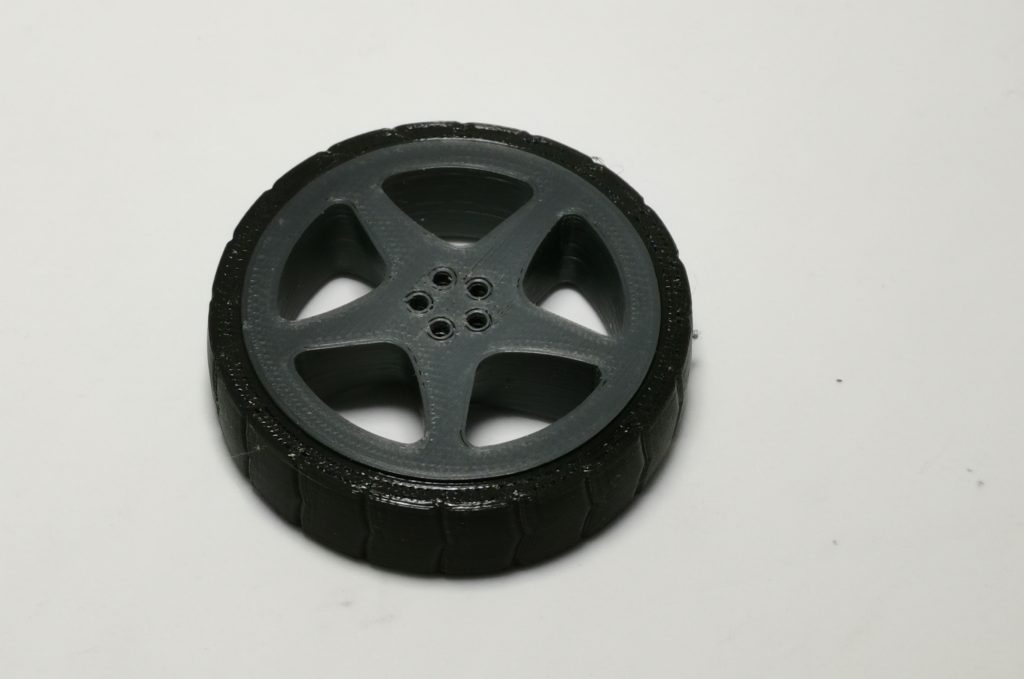
A huge test of the M300 Plus’ ability to run for long periods (and utilize a larger build volume) the next test undertaken was 27 hour print of a highly detailed replica sculpture of a bearded man. For this test, the use of the HEPA cover is highly recommended, as it helps to maintain a consistent atmosphere within the build. A lower print speed, in this case -20%, and 10% fan speed ensured the quality of the object, which was produced with 20% infill. Made from Z-ASA Pro, supports were easy to remove and quality was maintained from start to finish of the marathon build. Some faces on contact with support material however would require further post processing to achieve a smoother finish.

And finally, in what our engineers considered a key test for the M300 Plus a hexagonal vase, which makes use of the entire build volume of the M300 Plus was made over the course of one and half days.The result of this 3D print fully corresponds with Zortrax’s claims.There are no major defects on the vase, and no deformations or shifts of the print when the surface is close to the boundaries of the workspace.
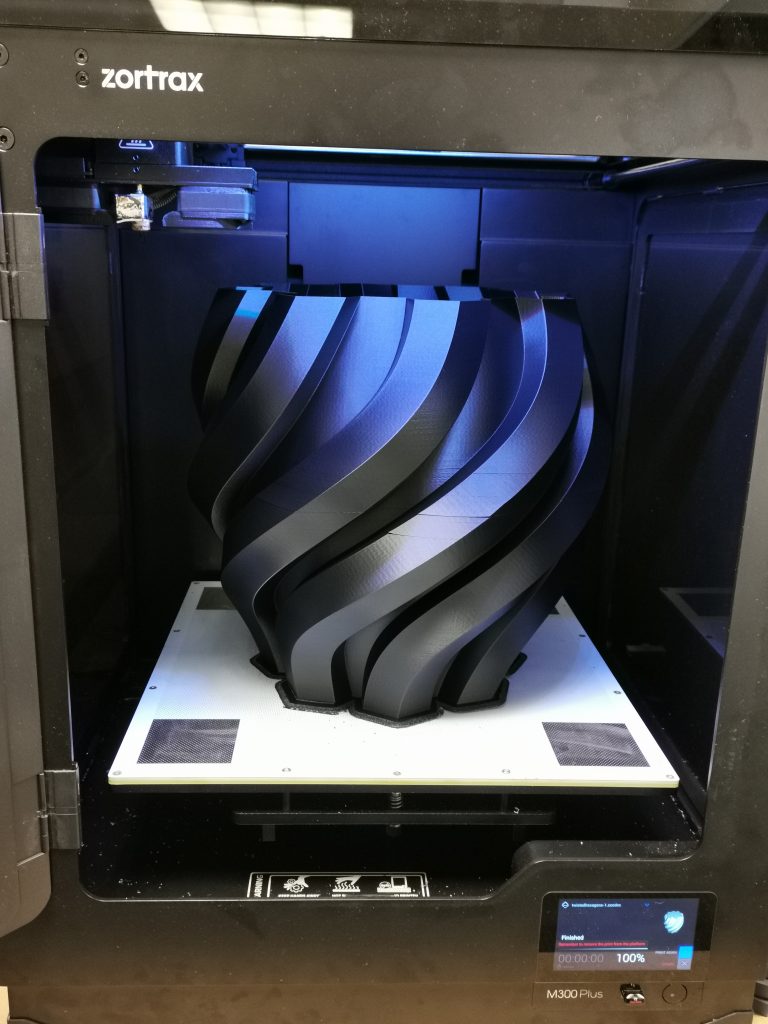
The final verdict
The Zortrax M300 Plus is a well designed 3D printer, made from good quality components, and it is simple to set up. Its perforated bed proved very efficient for ironing out any adhesion issues with 3D prints. The intuitive touch screen made it easy to load and unload filament, level the bed and start and stop prints. Using Zortrax’s Z-SUITE slicer was also very effective. The program is also continually being updated to fulfill the potential of the company’s machines, which is an encouraging sign when considering investment.
Zortrax’s own brand filaments work incredibly well on the M300 Plus. However we were able to produce parts using other standard, and challenging, materials such as flexible TPU. When 3D printing, the machine is capable of making full use of the remits of its build volume. It has shown it can manage the long print-times required for models of such a scale. The overall quality on large prints is very good, and all details are well replicated. Assemblies, small detailed parts, functional prototypes and other useful applications have also been proven through our testing. When warping, curling or wobbling is a concern of the material and model used the use of the company’s HEPA cover achieves the best results.
Following our internal testing we can confidently say that the Zortrax M300 Plus lives up to its claims. The machine accurately produced large objects and is easy to use. It has great potential, and would be a good addition to in-house workshops, and makerspaces, where the machine can be pushed to its limits.
Vote for your 3D Printer of the Year in the 2019 3D Printing Industry Awards.
Subscribe to the 3D Printing Industry newsletter for the latest news and 3D printer reviews. You can also keep connected by following us on Twitter and liking us on Facebook. Looking for a career in additive manufacturing? Visit 3D Printing Jobs for a selection of roles in the industry.
Featured image shows the Zortrax M300 Plus 3D printer with HEPA cover. Image via Zortrax



